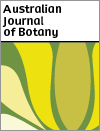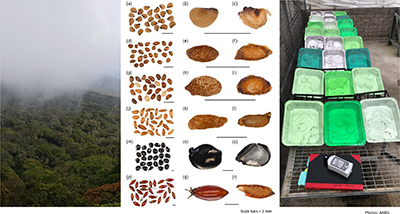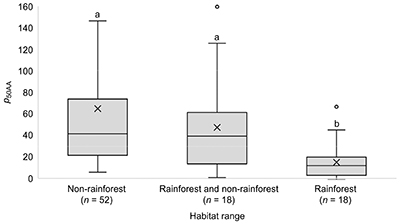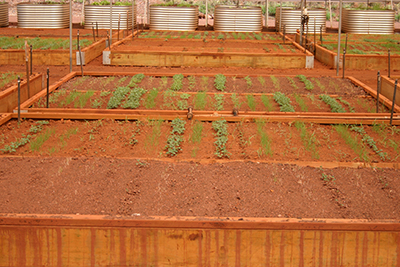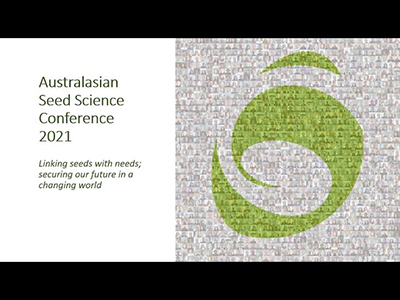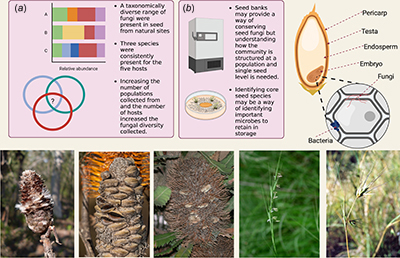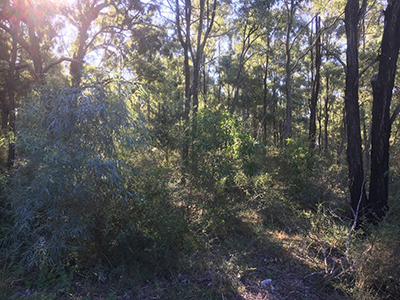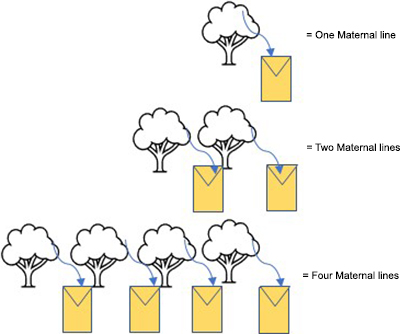Australian Journal of Botany
Volume 71
Number 7 2023
Special Issue
Australasian Seed Science Conference 2021
Guest Editors:
Dr Lydia K. Guja (Australian National Botanic Gardens)
Dr Mark K. J. Ooi (UNSW)
Dr Sally Norton (Agriculture Victoria)
Mr Damian Wrigley (Australian PlantBank)
Mr Bradley Desmond (Australian Seed Bank Partnership)
Dr Catherine A. Offord (Royal Botanic Gardens Sydney and Domain Trust)
Seed science is fundamental for addressing global challenges including biodiversity loss, climate change, food security, sustainable development and restoration. This paper highlights current and emerging directions in seed science and conservation, summarises the Australasian Seed Science Conference 2021, and introduces this Special Issue of the Australian Journal of Botany.
Seeds of six tropical montane cloud forest species were sown under light filters in a glasshouse, to investigate the effect of light/dark and light quality on germination. Responses to light quality and the presence/absence of light varied among species, suggesting divergent germination strategies. All six species were able to germinate at remarkably low R:FR values, suggesting they have the potential to survive changes in cloud immersion and light with climate change.
The comparative longevity of seeds of 33 Australian rainforest species was assessed using artificial aging. Rainforest-restricted species were significantly shorter-lived than seeds from non-rainforest habitats previously assessed using the same method. Poor longevity was related to collection elevation, with both rainforest and non-rainforest species from higher elevations being shorter-lived. Longevity determined by artificial aging did not always reflect the actual longevity in storage; several rainforest species predicted to be long-lived showed significant declines in viability after 12 years or less in storage.
Seeds face multiple hurdles to establish into mature plants; so the majority of seeds fail to germinate, emerge, and initially establish. To inform the development of improved seed management practices, we unpacked three life-stage transitions (i.e. germination, emergence and survival) for five species across a range of reconstructed soils and varying levels of simulated rainfall. We found many species-specific trade-offs at each life-stage transition but highlight that less dormant, larger seeded species were more likely to recruit in highly degraded dryland environments.
Seed science is an important research topic that provides new information for the basic understanding of plant species but also for agricultural crop security and the conservation and restoration of wild plants. A recent conference – the Australasian Seed Science Conference, 2021 – was held online and featured presentations from 24 early to middle career researchers who contributed exciting new research to this field. Our review summarises the research presented by these scientists.
Seed endophytes can increase rates of germination and establishment, and comprise a key part of the initial seedling microbiome, but can also be latent pathogens and saprotrophs. Despite this, we have little knowledge of seed endophytes within native plants. Using literature and our dataset of fungi isolated from five native Australian plant species, we identify four key areas to integrate seed microbiomes applicable to seed-bank storage, direct seeding and seed-collecting protocols. Images by the Royal Botanic Gardens and Domain Trust.
It is vital to understand how native plant species will cope with the anticipated increase in intense and frequent heatwaves, especially in the already severely urbanised Cumberland Plain Woodland. This study looks at seed germination and the novel addition of life-history trait information in the face of these intense and frequent heatwaves. Our research revealed heatwave intensity and frequency impact seed germination responses but life-history traits do not explain germination responses across species along the heatwave gradient.
Maintaining separate maternal lines in seed collections is essential for maximising the applications of these valuable resources. Ten reasons are provided, illustrating why keeping maternal lines separate can expedite conservation, restoration and research and improve the results and outcomes from these applications.


